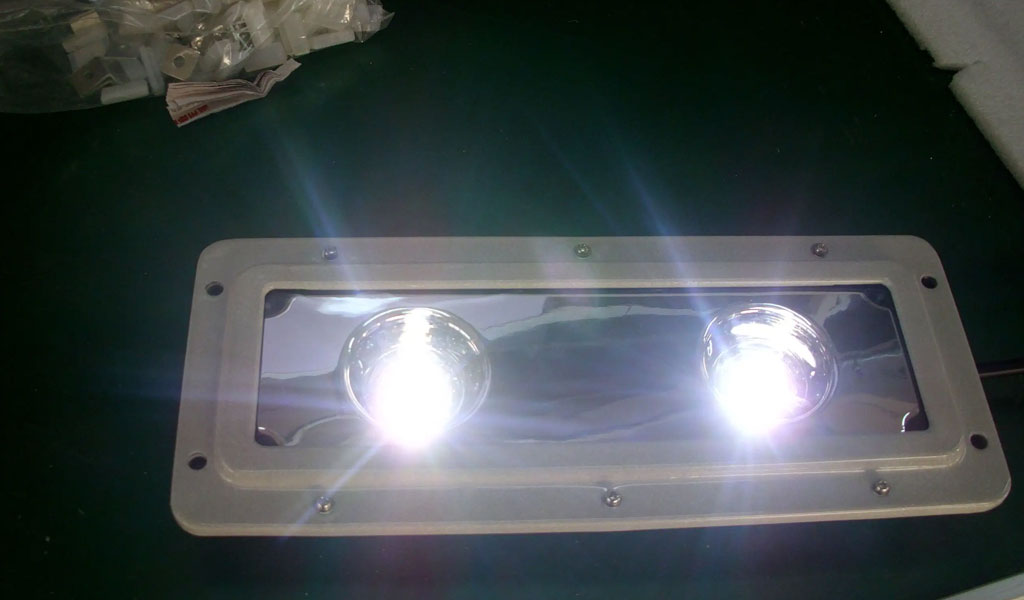
The reason why the chip mounted is called “flip chip” is relative to the traditional wire bonding connection method (WireBonding) and the post-balling process. The electrical side of the traditional chip connected to the substrate by wire bonding faces up, while the electrical side of the flip chip faces down, which is equivalent to turning the former over, so it is called “flip chip”.
The essence of flip chip is that on the basis of the traditional process, the light-emitting area and the electrode area of the chip are not designed on the same plane. At this time, the electrode area is mounted toward the bottom of the lamp cup, which can save the process of wire bonding. , but the precision of this process of solid crystal is relatively high, and it is generally difficult to achieve a high yield.
Requirements for flip chip:
- The base material is silicon;
- The electrical surface and solder bumps are on the lower surface of the component;
- Underfill is required after assembling on the substrate.
The Advantages Of Flip Chip Compared With Traditional Process
The GaN-based LED structure layer is grown on the sapphire substrate by MOCVD technology, and the light emitted from the light-emitting region of the P/N junction is emitted through the upper P-type region. Due to the poor conductivity of P-type GaN, in order to obtain good current spreading, a metal electrode layer composed of Ni-Au needs to be formed on the surface of the P region by evaporation technology. The lead of the P region is drawn out through this layer of metal film. For good current spreading, the Ni-Au metal electrode layer should not be too thin. Therefore, the luminous efficiency of the device will be greatly affected, and two factors, current expansion and light extraction efficiency, are usually taken into account at the same time. But no matter under what circumstances, the existence of metal film will always make the light transmission performance worse. In addition, the presence of lead solder joints also affects the light extraction efficiency of the device. Using a GaNLED flip-chip structure can fundamentally eliminate the above problems.
The Application Analysis Of Flip-chip LED Chip Technology Industry
In recent years, various countries in the world, such as European countries, the United States, Japan, South Korea and China, have implemented LED lighting related projects. Among them, the “Ten Cities, Ten Thousand Lights” plan promoted by my country is the most eye-catching. Street lights are an indispensable part of urban lighting. Traditional street lights usually use high-pressure sodium lamps or metal halide lamps. The biggest feature of these two light sources is that the size of the light-emitting arc tube is small, which can produce a large light output and has a high light efficiency. . However, when this type of light source is used in road lamps, only about 40% of the light reaches the road directly through the glass cover, and 60% of the light is reflected by the lamp reflector and then emitted from the lamp.
Therefore, there are basically two deficiencies in traditional lamps at present. First, the illuminance in the direction where the lamps are directly illuminated is very high, which can reach more than 50Lx in the secondary road. This area is obviously over-illuminated, and the illuminance at the intersection of the two lamps is only It is 20%-40% of the illuminance at the center of the lamp, and the light distribution uniformity is low; second, the reflector efficiency of such lamps is generally only 50%-60%, so there is a lot of light loss in the reflection process, so The overall efficiency of traditional high-pressure sodium lamps or metal halide street lamps is 70-80%, with low uniformity and excessive waste of illumination. In addition, the service life of high-pressure sodium lamps and metal halide lamps is usually less than 6000 hours, and the color rendering index is less than 30; LED has significant advantages such as high efficiency, energy saving, long life (50,000 hours), environmental protection, and high color rendering index (>75). How to effectively apply LEDs to road lighting has become the hottest topic for LED and street lamp manufacturers. Generally speaking, according to the use environment of the street lamp, there are strict requirements on the optical design, life guarantee, dustproof and waterproof ability, heat dissipation treatment, light efficiency and so on of the LED. As the core of LED street lights, the manufacturing technology of LED chips and the corresponding packaging technology jointly determine the future application prospects of LEDs in the field of lighting.






